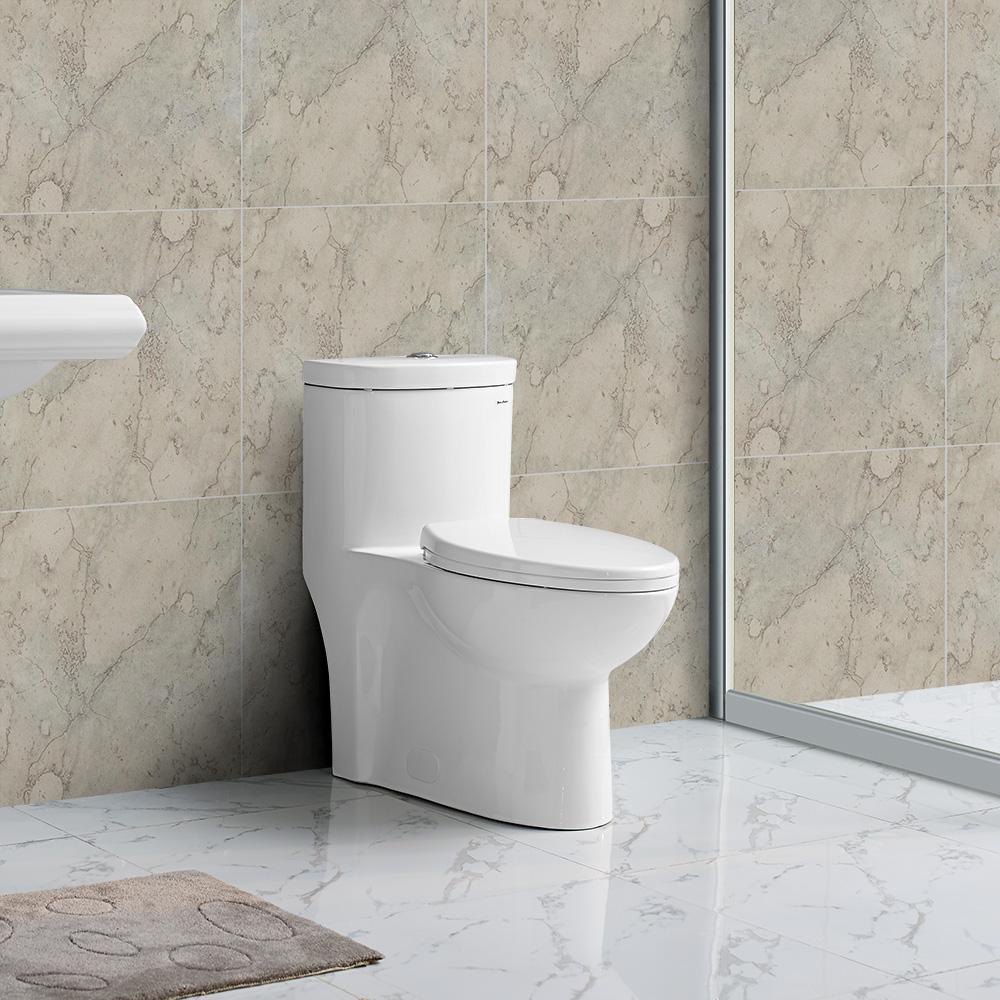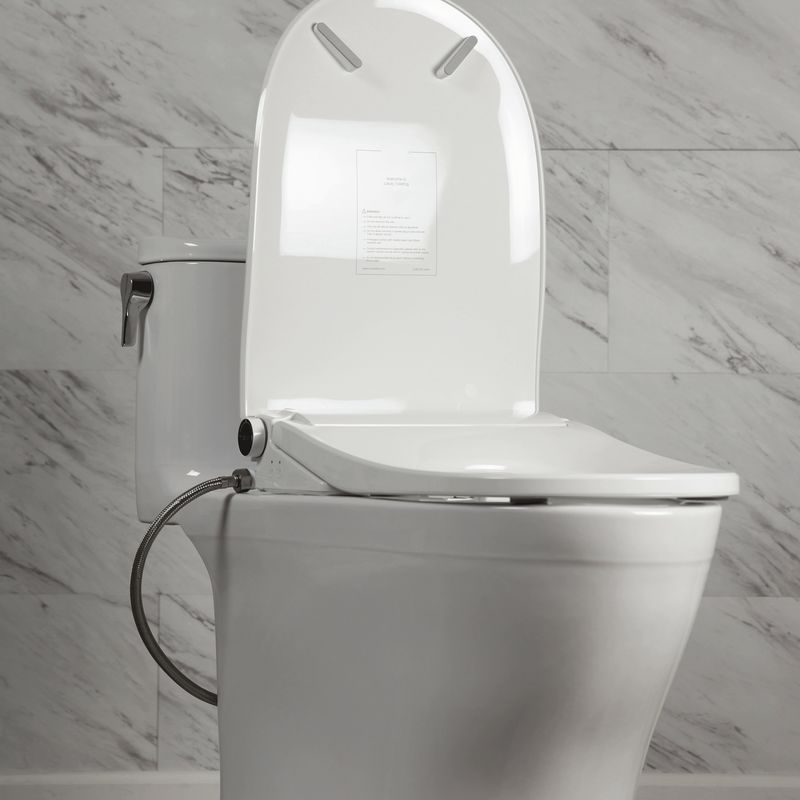 English
English
Jabra Sanitary is a sanitaryware supplier offering toilets, sinks, faucets, bathtubs, etc., at competitive prices. If you're a distributor, wholesaler, or project contractor, get a quote today!
 $23.9 Limited-time Offer
$23.9 Limited-time Offer Consignment Policy
Consignment Policy 20 Years of Experience
20 Years of Experience
Have you ever wondered about the parts of a sink? Whether you're planning a renovation, repairing a leak, or just curious, understanding the parts of a sink is essential. From faucets to drains and beyond, each sink part plays a crucial role in your daily routine.
In this comprehensive guide, we'll examine the essential parts of kitchen and bathroom sinks. We'll also share maintenance tips to keep them running efficiently.
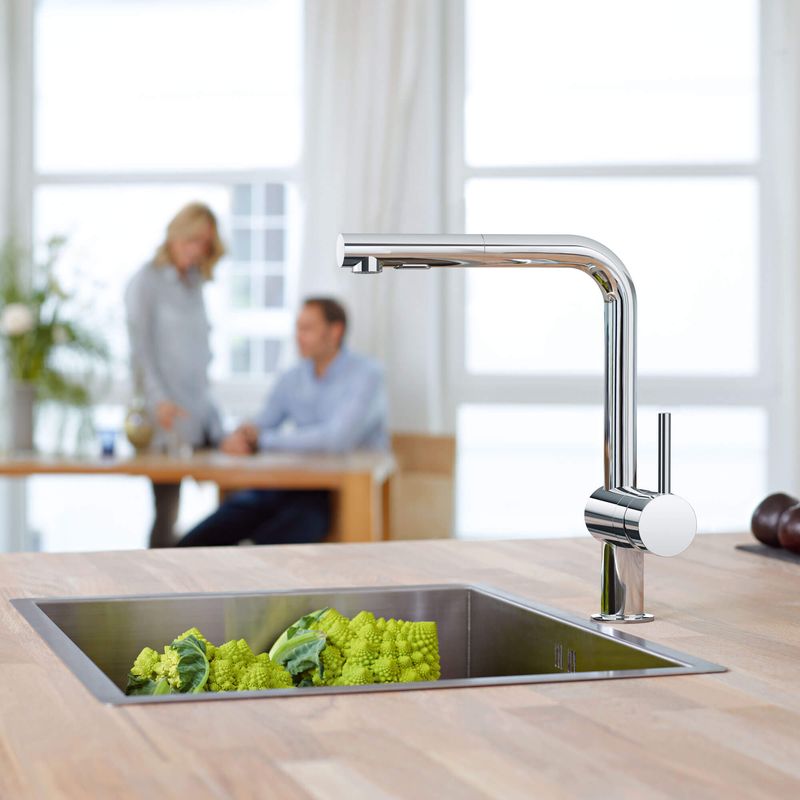
Table of Contents
Common Parts of a Sink
Parts of a Kitchen Sink
Parts of a Bathroom Sink
Parts of a Sink Faucet
Parts of a Sink Drain
How to Maintain the Different Parts of a Sink
FAQs
Conclusion
Common Parts of a Sink
No matter the type of sink—kitchen, bathroom, or utility—several common parts make up its structure and functionality. Below is a breakdown of the key parts of a sink you'll find in almost any sink setup:
- Basin: The main bowl where water collects for washing or rinsing. It's the most visible part of the sink and comes in various shapes, sizes, and materials.
- Faucet: The device that dispenses water. Faucets can come in various designs, including single-handle, double-handle, or touchless options.
- Drain: The opening at the bottom of the basin where water exits the sink. It connects to the plumbing system.
- Trap: A curved pipe located beneath the sink. It prevents sewer gases from entering your home. It also catches debris to help prevent clogs further down the plumbing.
- Controls: The handles or knobs used to control the water flow and temperature.
- Tailpiece: A straight pipe that connects the drain to the trap. It serves as the first part of the drainage system.
- Cleanout: An access point to the plumbing system, allowing for easy removal of clogs and maintenance.
- Water Supply Lines: Pipes that bring hot and cold water from your home's water supply to the faucet.
- Drain Stopper: A device that blocks the drain, allowing the sink to fill with water. Stoppers are commonly found in bathroom sinks.
- Shut-off Valve: Valves are located under the sink to control the water supply to the faucet. These are useful for repairs or emergencies.
- Slip-Joint Nuts: Connectors used to join plumbing pipes together. They make it easy to disassemble parts for cleaning or repairs.
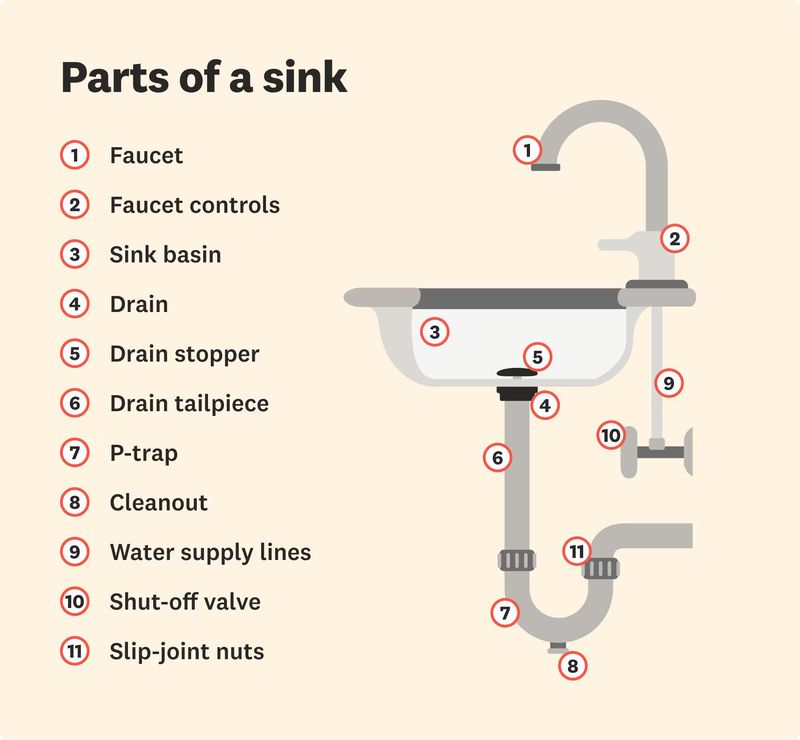
These common parts form the foundation of any sink, making them critical for understanding and maintaining your plumbing system.
Parts of a Kitchen Sink
Kitchen sinks share many of the same parts as other types of sinks. But they often include extra parts to handle the specific demands of a kitchen environment.
Let's look at the kitchen sink parts you'll commonly find in a kitchen sink:
Common Parts
- Basin
- Faucet
- Drain
- Trap
- Tailpiece
- Water Supply Lines
- Shut-off Valve
Additional Parts Unique to Kitchen Sinks
- Escutcheon: A flat plate that covers the hole in the countertop where the faucet connects. It provides a clean and finished look.
- Spray Head: A detachable nozzle connected to the faucet for more flexibility when rinsing dishes or cleaning the sink.
- Strainer: A perforated metal piece that fits over the drain to catch food particles and debris. It helps prevent clogs.
- Garbage Disposal: A device is installed beneath the sink. It grinds food waste into small pieces, allowing it to pass through the plumbing system.
- Stopper: A plug used to seal the drain and allow the basin to fill with water.
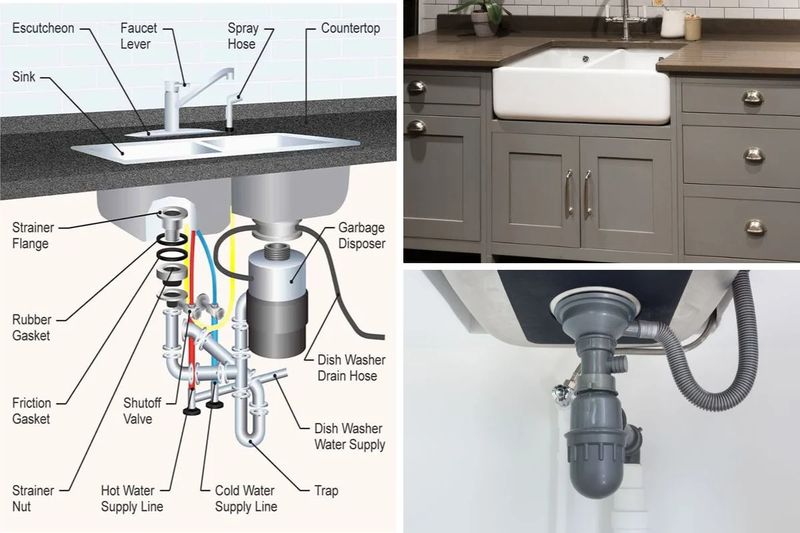
Kitchen sinks are built to handle frequent use, including washing large pots and pans and managing food waste. The additional features, like the spray head and garbage disposal, are designed to make kitchen tasks easier and more efficient.
Parts of a Bathroom Sink
Bathroom sinks are often simpler than kitchen sinks. But they come with unique features tailored to their purpose. Let's explore the key parts of a bathroom sink:
Common Parts
Bathroom sinks include the standard parts found in all sinks, such as:
- Basin
- Faucet
- Drain
- Trap
- Tailpiece
- Water Supply Lines
- Shut-off Valve
Extra Sink Parts TypicallyFound in Bathroom Sinks
Bathroom sinks often feature additional parts that cater to their specific functions:
- Stoppers: Used to block the drain, allowing the basin to fill with water. Stoppers in bathroom sinks are often controlled by a lever located on the back of the faucet.
- Valve Stops: A small component of a bathroom sink that helps regulate water flow to the faucet, ensuring smooth operation.
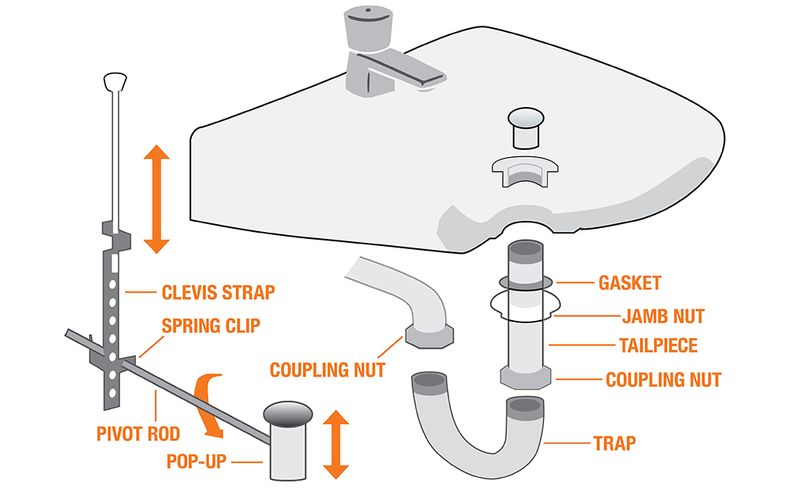
The extra parts in bathroom sinks are designed for convenience and comfort. For example, the stopper makes tasks like shaving or washing your face easier. The valve stops to help maintain steady water pressure.
Parts of a Sink Faucet
The faucet is one of the most critical parts of any sink. It controls water flow and is essential for everyday tasks. Sink faucets come with several parts, each serving a specific function. Here's a breakdown of the key parts of a sink faucet:
Main parts
- Faucet Lever: The handle(s) used to control water flow and temperature. Single-handle faucets combine hot and cold controls. Double-handle faucets have separate levers for each.
- Faucet Body: The main structure of the faucet. It houses internal parts and connects to the water supply.
- Spout and Spout Assembly: The part of the faucet that directs water into the sink basin. Spouts come in different designs, such as high-arc or low-arc.
- Aerator: A small screen at the tip of the spout that mixes air with water. It helps reduce splashing and conserving water.
Additional parts
- Escutcheon: A decorative plate that covers the hole where the faucet attaches to the sink or countertop. It provides a polished appearance.
- Spray Hose: Found in some kitchen faucets, this flexible hose extends to provide a wider range of motion for cleaning.
- Compression Couplings: Connectors used to secure the faucet to the water supply lines.
- Shut-off Valves: Located beneath the sink, these valves control the water supply to the faucet for repairs or emergencies.
- Water Supply Lines: Pipes or hoses that deliver hot and cold water from the home's plumbing to the faucet.
- Dishwasher Drain Hose: A hose that connects to some kitchen faucets to provide a water supply to the dishwasher.
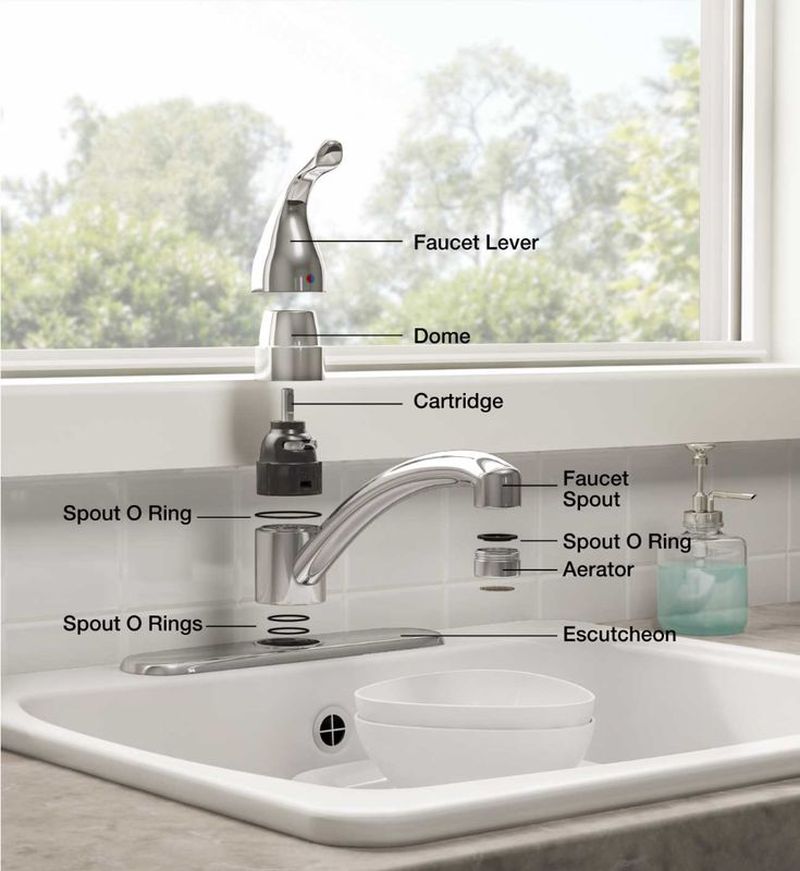
Understanding these parts can help you troubleshoot issues, make repairs, or upgrade your faucet to a more functional or stylish model.
Parts of a Sink Drain
The sink drain is an essential part of your plumbing system, responsible for directing wastewater away from the basin. While it might seem simple, the drain consists of multiple parts to ensure proper drainage and prevent clogs.
Here's a detailed look at the key parts of a sink drain:
- Strainer Basket: A perforated metal or plastic piece that sits in the drain opening. It catches debris, like food particles or hair, to prevent clogs further down the plumbing system.
- Strainer Flange: The flat and visible rim around the drain opening. It helps secure the strainer basket and provides a finished look to the drain.
- P-Trap: A U-shaped pipe is located under the sink. It holds a small amount of water to block sewer gases from entering your home. It also catches debris, making it easier to remove clogs.
- Strainer Nut: A nut that secures the strainer basket to the sink and helps maintain a tight and leak-proof seal.
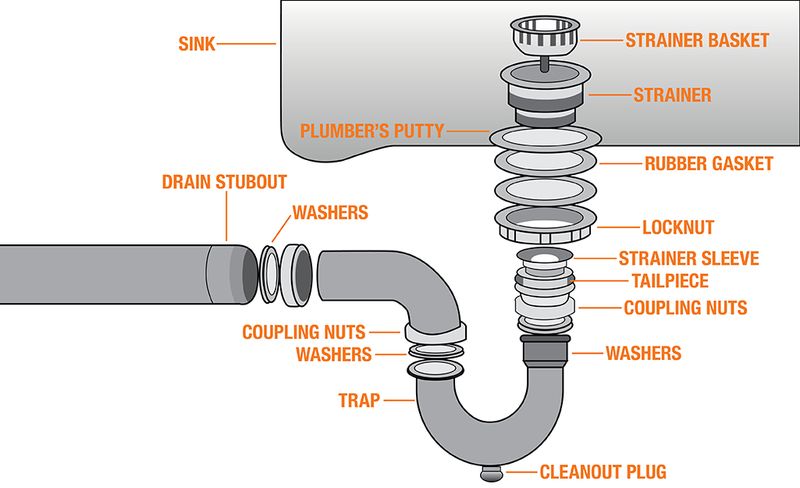
Regular cleaning of the strainer basket and P-trap can prevent blockages and keep your plumbing in good condition.
How to Maintain the Different Parts of a Sink
Proper maintenance of your sink and its parts is essential to ensure long-lasting functionality and to avoid costly repairs. By following these simple tips, you can keep your sink in excellent condition:
Regular Cleaning
- Clean your sink basin and faucet. Drain regularly using mild soap and water.
- For tougher stains, use a mixture of baking soda and vinegar to scrub the surface gently.
- Wipe down water supply lines and shut off valves occasionally to prevent dust and grime buildup.
Notice the Sink's Materials
Different materials require different care. For example:
- Stainless Steel Sinks: Avoid harsh abrasives to prevent scratches.
- Porcelain Sinks: Use non-abrasive cleaners to maintain their glossy finish.
Always remember to follow manufacturer instructions for cleaning and maintenance.
Prevent Clogs
- Use a strainer basket to catch food debris or hair before it enters the drain.
- Avoid pouring grease, oil, or coffee grounds down the drain as they can cause buildup.
Don't Pour Harsh Chemicals
- Avoid using chemical drain cleaners, as they can damage pipes and fittings over time.
- Opt for natural solutions like baking soda and vinegar to clear minor clogs.
Use Your Garbage Disposal Wisely
- Only put soft food scraps into the garbage disposal.
- Avoid hard items like bones or fibrous materials like celery, as they can damage the blades.
- Run cold water while using the disposal to help flush waste through the pipes.
Find a Pro for Repairs
If you encounter persistent clogs, leaks, or other issues, call a licensed plumber to avoid further damage. Regular professional inspections can help identify and fix potential problems early.
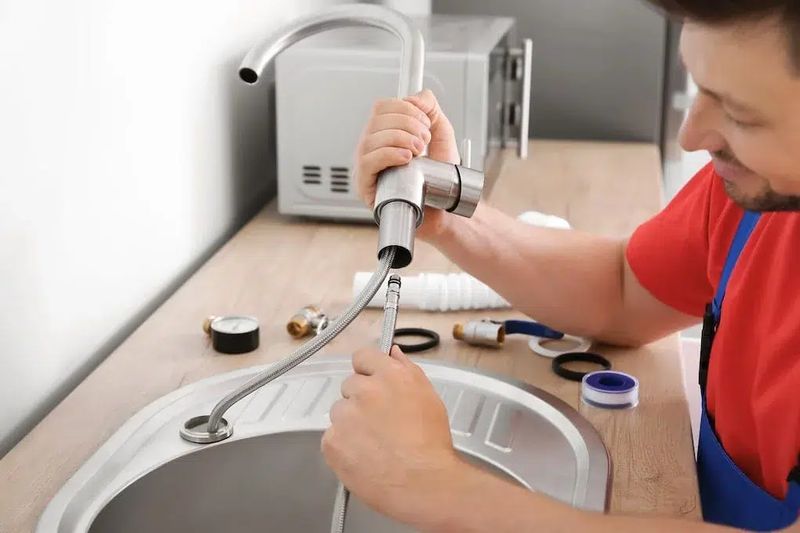
FAQs
Here are answers to some of the most frequently asked questions about sink parts and plumbing.
Are all sink drains universal?
No, sink drains are not universal. They vary in size and design depending on the type of sink (kitchen, bathroom, or utility). It's important to measure your sink's drain opening and check compatibility before purchasing a replacement.
What plumbing is needed for a bathroom sink?
- Faucet water supply lines for hot and cold water.
- A P-trap to prevent sewer gases.
- A drain assembly including a strainer and stopper.
- Shut off valves for easy water control during maintenance.
How do I know what size parts to use for my bathroom sink?
You can measure the existing parts (like the drain opening, faucet holes, or water supply lines) to determine the correct size.
How high should a bathroom sink waste pipe be?
The height of the waste pipe should typically be 16–20 inches from the floor, depending on the vanity height and sink design. Always follow local plumbing codes for precise measurements.
What is the thing next to my kitchen faucet?
The thing next to your kitchen faucet is likely an air gap. It is a small cylindrical metal fitting that prevents dirty water from the dishwasher from backing up into the sink.
Conclusion
Sinks are more than just fixtures. From the basin and faucet to the drain and trap, every part plays an essential role in ensuring proper functionality. By understanding the common and unique parts of kitchen and bathroom sinks, you can make informed decisions about maintenance, repairs, and upgrades.
If you're planning to repair or upgrade your sink, jabrasanitary.com is the top choice. We offer high-quality products, and installation and maintenance services. We aim to help you find the perfect balance of style and functionality that complements your needs.









